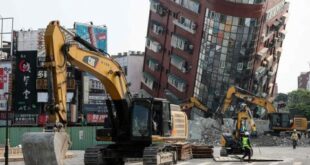We have tried to be as eco-friendly as possible but realized that’s not always practical

This First Person column is written by Jason Charette, who lives in rural P.E.I. For more information about CBC's First Person stories, please see the FAQ.
There was little chance I would get even a wink of sleep as I experienced gale-strength winds for the first time. My family and I moved to P.E.I. from B.C., where hurricanes are not commonplace, so we didn't know quite what to expect. As we hunkered down and waited for post-tropical storm Dorian to make landfall, one sound stood out in particular amid the howling winds: the sound of nails being pulled from the studs of our walls. The power mast was trying to rip off from the house under the strain of the weight of the utility pole as it swung in the wind; the base of which snapped in the winds.
Fearing that the pole might fall into our house, I moved our 18-month-old daughter from her room upstairs to a room on the opposite side of the house. As the daylight fully faded and the power cut out, I continued to keep a wary watch on the wall closest to the pole, half-expecting it to tear open. But I didn't have much time to dwell on it as heavy rains continued to fall, and I spent much of the night in the basement bailing out our sump pit with a bucket to prevent it from cresting and flooding our home.
It was a night I remember too well and hope to never experience again. It was also Dorian's wrath that finally pushed my family into building a new home — specifically a house that reduces our impact on climate while simultaneously weathering the coming storms and being a great place to raise our family.

I wanted it to be different from the suburban homes where I grew up in B.C. As an adult, I watched as the suburbs crept forward into farmland and forests — cookie-cutter houses built in alternating colours, the monotony only broken by the odd McMansion. There was something that didn't feel right to me, but with fossil fuels powering cheap heat and the housing boom on high, there seemed to be little thought put into the impact on the future.
My wife and I moved to P.E.I. in the midst of 2015's record-breaking snowfall — yet another example of the changing climate in the Maritimes. When our daughter was born, we were living in a mid-century storey-and-a-half home. We loved our home, but it also came with its challenges. We roasted in the summer despite our new heat pump, burned untold amounts of furnace oil in winter and took a beating during Dorian.
Rebuilding for a changing climate
So, when we had the chance to rebuild our dream home — a privilege I know not everyone can have — we set out to do it with our changing climate in mind. As the Atlantic warms, what used to be "once a century" extreme weather events are expected to become more frequent.
Every inch of space had to serve a purpose and provide the functionality we had gotten used to while keeping an eye on the future.
In a bizarre paradox, we found ourselves working with eco-unfriendly materials in order to be as eco-friendly as possible. For example, we would have liked to have used low-impact materials such as cob or even wood, but we opted for petroleum-based insulated concrete form foam as well as concrete and steel because of the combination of its resiliency, longevity and energy retention. We had to also weigh the fact that the cement industry is also responsible for at least eight per cent of global emissions caused by humans.

Our new 770-square-foot house is roughly half the size of the average Nova Scotia house, which pushed us to look at how we can reduce wasted space and rethink housing design. We took unorthodox steps such as installing a heat pump ventless dryer, 20 x 28 feet footprint, a passive solar heat capture that slowly releases heat into the home when the sun is absent and triple glazed windows. The house is also clad in a heavy steel siding on the roof and walls — all in the name of energy savings, longevity and reduced overall impact.

As we watched the concrete fill the walls of our house in the summer of 2022, I held our daughter — who will more than likely inherit the house along with the current economic climate — and felt confident that we created a future-ready house.
Our tiny house was tested in September that same year during post-tropical storm Fiona. It was only partially constructed at the time, but when we surveyed it after the storm, the exterior showed no signs of wear, even with its foam outer shell completely unclad. As news of this year's hurricane season peppers the headlines, I find myself focused on the mundane hurricane preparations — stocking the freezer and cleaning up the yard – and much less on the uncertainty of damage.
I know that the next record-breaking storm could come this year or next, but I have done all I can to prepare. It's a waiting game now.
Do you have a compelling personal story that can bring understanding or help others? We want to hear from you. Here's more info on how to pitch to us.
*****
Credit belongs to : www.cbc.ca
 MaharlikaNews | Canada Leading Online Filipino Newspaper Portal The No. 1 most engaged information website for Filipino – Canadian in Canada. MaharlikaNews.com received almost a quarter a million visitors in 2020.
MaharlikaNews | Canada Leading Online Filipino Newspaper Portal The No. 1 most engaged information website for Filipino – Canadian in Canada. MaharlikaNews.com received almost a quarter a million visitors in 2020.







